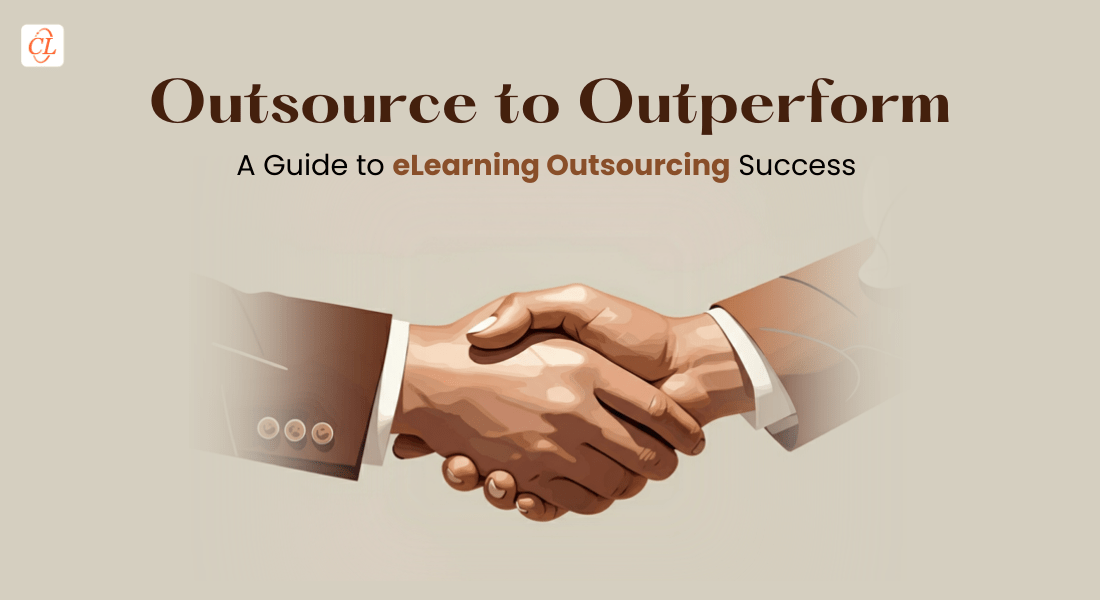Tips to Efficiently Manage Outsourced E-learning Projects

If you’ve made the decision to outsource your e-learning projects considering the benefits outsourcing provides and have made your choice of vendor after going through a checklist, you are well on the road to successful e-learning implementation. But before you pat yourself on the back, are you sure you can manage the e-learning projects successfully with your outsourcing partner? This blog will give you some tips to make the partnership work.
1. Use a well-defined Statement of Work
When you work with an outsourcing partner, you must be clear of what you want from the project, so articulate your goals clearly. Based on this, ask your e-learning vendor for clear outlines which will help you gauge whether the course will be aligned with your goals. Be clear about your objectives for the course and ensure you get a well-defined Statement of Work (SOW) document from the client.
This will help you define the vendor’s and your responsibilities accurately.
2. Study and understand the project scope document and the design document
Before you sign the project scope document and the design document, study them thoroughly. This is because the project scope document defines the timeline and budget for the project. It outlines the deliverables and defines the goals you have for the project. And the design document gives a detailed outline of what the final course will look like.
If you have doubts on certain aspects in these documents, get them clarified by your vendor.
If you need to include any specific goals, especially from the senior management in the scope document, include them before finalizing it with the vendor.
Changes to these documents are difficult to make once they are signed and add-ons can mean an addition to the budget and extension of the timeline.
3. Get a prototype of the project
Even if the project scope document and the design document define what you will get from your vendor, you must get a prototype of the course before starting the e-learning project. This is especially important when you are dealing with a vendor for the first time or if it is a big project.
A prototype will give you a preview of the course and assure that you will get the output you are looking for. This makes sense for projects that are to be implemented on a large scale.
Discovering that you are not satisfied with the deliverables, three months after the project gets underway will be too late. It will be difficult to make changes at that stage and even if you manage to do it, you will only be extending your budget and deadline.
A careful evaluation of the prototype, which is developed from a portion of the content, will help you point out any issues with the instructional strategy, design, or functionalities. These issues must be discussed and resolved in the early stages. This will reduce the chances of these issues cropping up in the latter stages of the project.
4. Clearly spell out your quality expectations
When working with an outsourcing partner, you must clearly communicate your expectations on quality. This includes the collective view of the management and the employees of your organization. It should include details about the features of the course – in terms of content presentation and functionality. Talking of quality, your parameters should be based on what you expect your learners to do after they finish the course.
Setting quality criteria for various aspects as such will be a wise move. You should review the checklists the vendor uses for quality assessment and suggest changes before work on the project starts. This will ensure the project meets your quality expectations.
5. Get a qualified person for review and feedback
When you need to review or provide feedback on the deliverables of different stages, do not assume it is a simple task and can be done quickly. Ensure you have an expert to review them. This will help you give qualified feedback and critical reviews. The vendor will appreciate and understand your feedback and make the changes.
For iterations in the course the suggestion is that you chalk out the timeline for delivering feedback and identify at what stages it can be done. This will save you from an extended deadline when there are delays in delivering and implementing feedback on the respective sides.
6. Keep communication lines open
This is important to build a relationship of trust and confidence between you and the vendor. Ensure communication channels are open between your team and the vendor’s development team. This will help come up with new ideas through discussions, even after the project scope or design document is signed.
You should not defer from providing constructive feedback to the vendor. Good communication will help you resolve issues with the vendor.
7. Develop a true partnership
Developing a true partnership requires you and the vendor to think alike. Both parties should view each other as a partner rather than look at the project as a client-vendor relationship. Both should work with the same objective of bringing out a good e-learning course.
This requires a give-and-take attitude. The vendor, in his quest to provide you a quality product should be willing to go the extra mile. Similarly, if the vendor lacks a particular skill important for your project, do not hesitate to provide him the required help, either through training, tools, or resources. This attitude will foster a fruitful and long-term win-win relationship between the parties.
8. Build a relationship
Building a relationship with the vendor is important, especially for the long term. As your organization grows, you will likely be outsourcing more e-learning projects.
Working with a vendor is a learning experience. You start understanding each other’s working culture and style; this deepens with each new project you work on. After some time, the projects will be executed without any setbacks.
Managing an outsourced e-learning project requires efforts from your side to make the partnership with the vendor a sustainable one. This will not only ensure good quality courses but also better ROI for your e-learning investment. Selecting the right e-learning vendor will greatly influence your success. Download our free e-book, E-learning Outsourcing: Selecting the Right E-learning Vendor to know more about outsourcing for optimum benefits.





